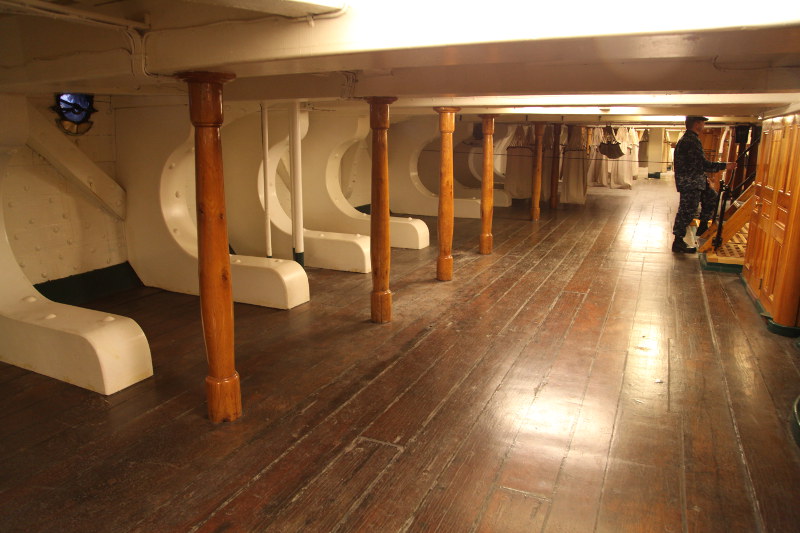The U.S.S. Constitution or Old Ironside as she is commonly known was first launched into service in 1797 from the Charleston shipyard; but, unlike most (if not all) ships from this era, she is still an actively commissioned vessel in the United States Navy.
That being said, the vessel no longer sees action except on weekends when it is open to the public and tours are given by enlisted sailors in the Navy.
There is one other distinction to note: unlike many other iconic ships from history (like the Bluenose and the Mayflower), the Constitution is not a reproduction. It is the original ship that was built in the 18th century. It is the 10th oldest ship in the world and its home is the place where it was originally constructed.
In its day, the Constitution was America’s third warship built to protect merchant vessels from pirates (built at a cost of just over 300,000). The nickname Old Ironside comes from her reputation in battle when cannonballs simply bounced off her sides rather than causing damage. This is because the ship was constructed using a rare oak found only in Georgia; the oak simply repelled attack unlike other ships constructed elsewhere in the world. As such, in battles from the War of 1812, the Barbary Wars, or the Battle of Tripoli, Old Ironside made mincemeat of the competition while rarely sustaining any damage. In her 217+ year history, she has never lost a battle.
While seemingly indestructible, the ravages of time wore heavily on her construction over the centuries; she has been saved numerous times from the scrapyard by private individuals. The most notable were school children from around America who donated their pennies to fund a full reconstruction in 1925.
During our visit, when asked by one sailor if she had any questions, responded with, “Why do the guns have names (seen in a placard above each gun)?” The answer was a rather interesting one. The guns themselves don’t have names, but centuries ago because a large number of sailors in the navy were unable to read, they named each of the gun ports where the canon rested to make it easier for these soldiers to know which guns to man. Most were named after areas that were familiar to the sailors (e.g. their home town or historic sites). These names stuck, which is why above each gun there is a placard with a name.
